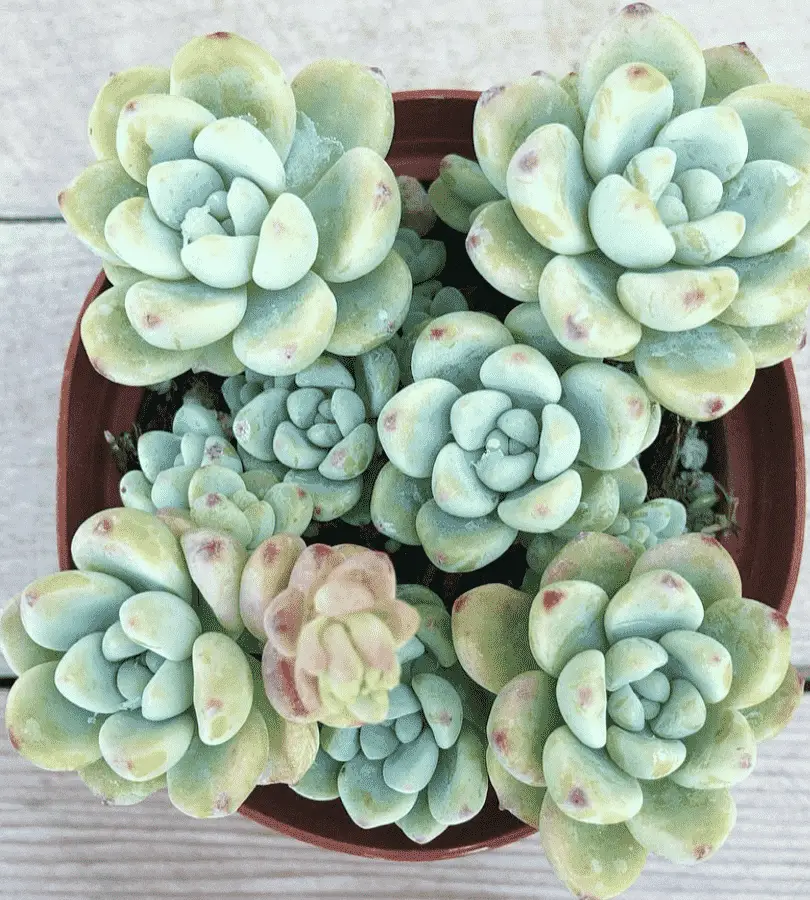
Picture via fairyblooms
Basic Info
Sedum Clavatum is an interesting succulent out there. As the plant matures you can expect it to reach up to 10 cm (4″) tall and about 20 cm (8″) in diameter. The plant is best known to have green fleshy leaves with red edges.
Scientific Classification
Family: Crassulaceae
Subfamily: Sedoideae
Tribe: Sedeae
Genus: Sedum
Care and Propagation Information
Watering
When watering the Sedum clavatum be careful it is a plant that is sensitive to over-watering. It is a plant that needs to be thoroughly drenched in water and dried before watering again. The plant should be water mostly between Spring to Fall, let the plant dry thoroughly before watering again.
General Care for Sedum clavatum
What kind of a plant carer should select the Sedum clavatum? It is perfect for a beginner plant grower. The plant does best when cared for indoor in a proper light home.
This page contains affiliate links.
Quick Facts:
- Thrives best inside in a proper lit-room
- Should be grown outdoor
- Needs a similar amount of water as other succulents
- Can die easily if overwatered
- Becomes 10 cm (4″) tall
- 20 cm (8″) wide
- Best 10a (Minimum -1.1 °C (30° F)
- Does not handle cold well
- Best propagated with leves, stems or seeds
- Generally not known to be toxic
- Grows best during Spring and Fall
Where to Plant
Sedum clavatum is a plant that grows easiest in free-draining gritty compost. The plant does not handle cold well, so if you live an area that is colder than – 1,1°C (30°F) use a succulent container. It makes it easier to transport the plant indoor and outdoor.
How to Propagate Sedum clavatum
Learning how to propagate Sedum clavatum, begin by selecting a sturdy, healthy leaf. Then remove the stem from the main plant, cut the stem off with a sharp knife. Sedum clavatum is one of the species that easily drop its leaves; it can, however, be challenging to grow a large specimen.
Once the leaf is off the Sedum clavatum, let it sit for a few days before placing in nutritious and well-drained soil. The soil should be drenched thoroughly, never let the soil dry. Once the plant’s root has started to appear, let the plant take its time to grow.
Origin and Habitat
Sedum clavatum is known to be native to Mexico

